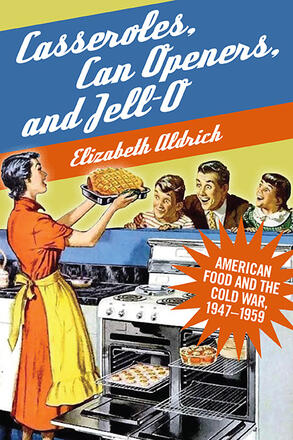
Casseroles, Can Openers, and Jell-O
American Food and the Cold War, 1947–1959
Alternative formats available from:
An “all-you-can-eat” tour of American life in the postwar period, told through the foods we loved.
Description
Silver Winner of the 2023 Foreword INDIES Book of the Year Award in the Popular Culture category
Casseroles, Can Openers, and Jell-O provides insight on how American food culture developed during the early years of the Cold War. Highlighting gender roles, the promotion of democracy and capitalism, and the impact of mass market advertising, the book draws on cookbooks, popular magazines, television advertisements, government publications, and industry pamphlets to paint a vivid picture of what Americans ate and how food was enlisted as a symbol of America’s postwar dominance. Featuring eighty recipes, the book shows how the food industry promoted new processed foods to an increasingly industrialized nation. For anyone wanting to better understand how America’s food culture developed during the mid-twentieth century and for those who were raised on TV dinners and Campbell's soup, the book offers an engaging and evocative look at the story of American cuisine during the early years of the Cold War.
Elizabeth Aldrich is Curator Emeritus of Dance at the Library of Congress. She is the author of From Ballroom to Hell: Grace and Folly in Nineteenth-Century Dance.
Reviews
"A much-needed addition to the literature of the field. … It will be useful to university professors who teach culture in the Cold War, a growing field. In addition, with the playful quality of recipe inclusion, the book should appeal to general readers." — Victoria Phillips, author of Martha Graham's Cold War: The Dance of American Diplomacy
"Of interest to educated readers from among the baby boomer generation who would like to think about this mid-century through the perspective of food. For students, classes that focus on food history, postwar America, and perhaps women's studies would benefit from this book." — Anna Zeide, author of Canned: The Rise and Fall of Consumer Confidence in the American Food Industry